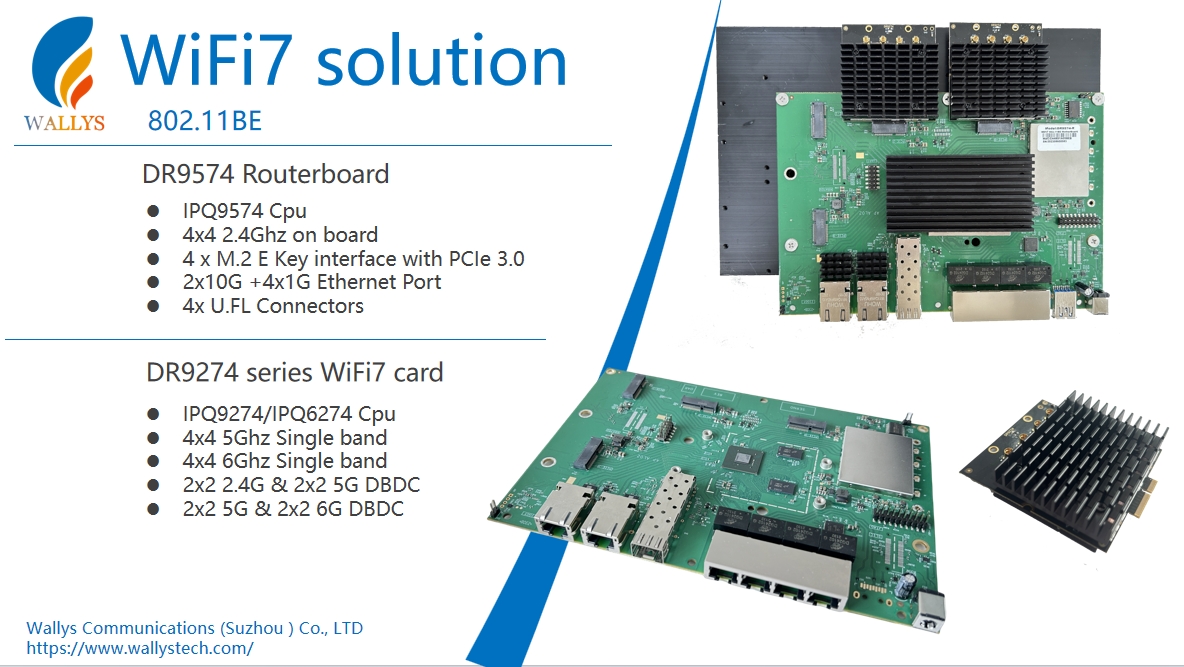|
|
QCN6224 is mainly used in the field of mobile communication, such as smart phones, Internet of Things devices, etc.
Supported communication standards: mainly 4G LTE and possibly 5G NR.
Processor architecture: May use Qualcomm's own Kryo processor or another ARM Cortex architecture.
Spectrum range: Multiple frequency bands are covered to support worldwide communications.
Data transmission speed: Provides high-speed data transmission, possibly supporting multi-Gbps speeds.
Other key specifications: May include advanced antenna technology, multi-mode multi-band support, low-power design, and more.
Featured functions:
Highly integrated multi-mode and multi-band support enables it to adapt to different regional and carrier networks.
Advanced signal processor to improve data transmission efficiency and network connection stability.
Security enhancements may include hardware-level security features to protect user data and communication privacy.
Application scenario:
The QCN6224 is suitable for high-performance smartphones, iot connected devices and other scenarios that require stable mobile communication connections and high-speed data transmission.
QCN9274 is mainly used in industrial automation, automotive interconnection and other fields.
Supported communication standards: Short-range communication standards such as Wi-Fi and Bluetooth are supported.
Processor architecture: May use Qualcomm's own Kryo processor or another ARM Cortex architecture.
Spectrum range: Covers Wi-Fi and Bluetooth bands to support wireless communication between local area networks and devices.
Data transfer speed: Provides efficient and reliable data transfer for industrial and automotive applications.
Other key specifications: May include industrial-grade tolerance, low-power design, etc.
Featured functions:
Highly integrated Wi-Fi and Bluetooth solutions simplify device design and improve connectivity performance.
Advanced wireless connection management ensures reliability and stability in complex environments.
Security features for high data security requirements in the industrial and automotive sectors.

Application scenario:
The QCN9274 is suitable for automotive connectivity, industrial Internet of Things and other scenarios that require stable wireless connectivity and highly integrated solutions.
Generally speaking, the above two chips will be designed by various suppliers as WiFi cards, expanding the radio of the motherboard, improving the speed of network connection, and improving performance! Let's take a look at the main functions of the WiFi card designed as M.2 interface, then why is it designed as M.2, what are the features of M.2?
For 6G WiFi cards with M.2 interfaces, the specific functional performance will depend on the chip design and the manufacturer's implementation. The following are possible features and performance characteristics:
Communication standard:
Support for the 6G WiFi standard, commonly referred to as the 802.11ax standard, also known as Wi-Fi 6. This provides higher data transfer rates and better network efficiency.
Data transfer rate:
With support for higher data transfer rates, Wi-Fi 6 typically delivers faster connection speeds and lower latency. The exact rate depends on the design of the chip, but it may support transmission speeds of multiple GBps.
Frequency band coverage:
The chips are likely to support the 2.4GHz and 5GHz bands, as well as higher bands introduced by the Wi-Fi 6 standard, such as 6GHz. This makes more spectrum available to support more devices and increase network capacity.
Multiple User, Multiple Input, Multiple Output (MU-MIMO) :
Support for MU-MIMO technology allows simultaneous communication with multiple devices, improving network efficiency.
Infrastructure models and Mesh networks:
It is possible to support the infrastructure model introduced by Wi-Fi 6 and Mesh networks, providing more flexible network coverage and management.
Bluetooth compatibility:
In addition to Wi-Fi, a Bluetooth module may also be integrated on the M.2 card to provide Bluetooth connectivity.
Low power design:
To better manage battery life in mobile and portable devices, these cards are often designed with low power consumption.
Security:
Built-in security features, such as WPA3 encryption and other protection mechanisms, ensure the security of wireless communications.
Antenna technology:
High-performance antenna design to optimize signal strength and coverage.
Driver support and software:
Driver and software support is provided to ensure compatibility and optimize performance.
Wallys software technology advantages:Wallys has 10 years of experience in software development and is very experienced in uboot, Linux, wifi protocol, wifi performance, OS and other systems. It mainly uses Qualcomm chips to develop important software such as drivers and kernels, and has the ability to modify and compile to meet customers' different wifi functional requirements. Meanwhile, it participates in openwrt organization and code development. wifi5 product DR40x9 has been officially supported by openwrt.Hardware technology advantages:We have a strong hardware design team, and experienced people know that the most difficult part of hardware design is RF circuit design, baseband, etc., while wallys team made 0 error to achieve signal integrity, such as frequency conversion of network card, from 2.4G to 900M, which is a technological breakthrough.Clients: TIP,Facebook, Openwrt, etcEmail:sales@wallystech.comWEB:https://www.wallystech.com/
|
|